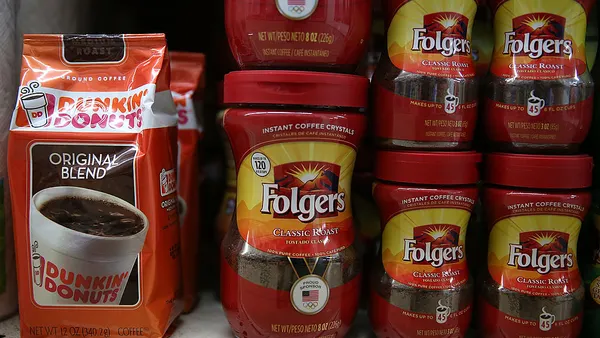Dive Brief:
- Suppliers displaying environmental leadership are more competitive in other performance areas than those not doing so, reported 95% of CDP supply chain members, representing $3.6 trillion in procurement spend, in the nonprofit's latest report.
- CDP's research shows a connection between high-performing suppliers and carbon-conscious suppliers, suggesting that measuring and disclosing emissions may be an indicator of high performance. "That's what we hear from procurement departments all the time is at the end of the day, what matters is not just what is the carbon intensity of the product, but it's, are they making the products to the right specs? Are they getting them to the right ports at the right time? Are they on the shelf in time for Christmas seasons?" CDP North America President Bruno Sarda told Supply Chain Dive.
- Supplier performance is important in the effort to limit global temperature rise to 1.5 degrees Celsius since any purchasing organization's internal operational emissions are generally dwarfed by the combined emissions of their supplier network.
Dive Insight:
CDP's 125 supply chain members are a self-selected group predisposed to engaging in highly-prized sustainability efforts, but the names and buying power of the members make the group worth paying attention to for almost any supplier.
Lead members include Alphabet, Dell, L'Oreal, Microsoft, Walmart and more. Ninety-five percent of the members reported the correlation between supplier performance quality and supplier sustainability. Leading purchasing organizations — Sarda named Phillips as an example — put the responsibility of tracking supplier performance and sustainability in the same department since the two elements have proven related.
Furthermore, just 5% of CDP purchasing members reported increased pay for more carbon-conscious suppliers. Sarda said a leading myth in sustainable sourcing is that supplier requests to change energy sourcing or decrease emissions will be costly, and passed onto the customer.
"What we're finding overwhelmingly is, in fact, these things just make business sense for the procurement organizations as well as for their suppliers," said Sarda.
The report suggests purchasing organizations begin to engage in the emission conversation by asking what portion of their electricity purchasing comes from renewable sourcing. A baseline suggestion for beginners, according to CDP is 20%. Disclosing this info to CDP is also an important step.
"Our entire theory of change has always been that transparency breeds accountability and not just that what gets measured gets managed, but that when you have that public level accountability, when there's real transparency in the system, it's not done to shame or embarrass in any way. But it's the reality of where are the things we need to address," said Sarda.
Out of the nearly 7,000 suppliers that responded to CDP's survey, 4% had targets set for renewable energy.
Anheuser-Busch InBev, which has pledged to reach 100% renewable purchased energy by 2025 and reduce overall carbon emissions by 25%, has been encouraging suppliers to convert to renewables and so far has achieved 44% conversion, up from 35% last year.
Emissions are on the radar of CDP supply chain members in a very real way said Sarda, but more nuanced issues like deforestation are not yet, despite its close connection to decarbonization.
"That's certainly a big point of concern and frustration for us ... We've identified about 1,500, large companies that have significant deforestation risk and their supply chains," Sarda said, and added 70% of them don't respond to investor requests to disclose forest actions to CBP.














